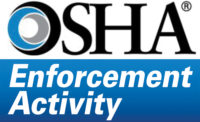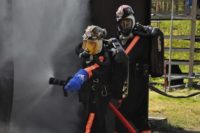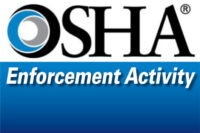OSHA sends personnel to hard-hit West Virginia

OSHA is deploying assets to flood-impacted West Virginia counties to ensure employers, workers and others engaged in cleanup efforts avoid potential hazards and take steps to protect themselves.
OSHA compliance assistance officers will provide initial assistance in the three hardest hit counties of Kanawha, Greenbrier and Nicholas - which the President has declared as federal disaster areas.
Hazardous cleanup work
"We want to ensure that employers do not put their workers at risk, and workers and the general public are aware of the hazards involved in flood cleanup work. Personal protective equipment and other precautions are necessary to prevent serious injury, illness and even death," said Richard Mendelson, OSHA's regional administrator in Philadelphia.
Before entering buildings or structures after a flood, an assessment of the potential hazards and exposure must be done. Using that information, an employer must ensure - at a minimum - they educate workers on the potential hazards facing them. Employers should also ensure that workers are given proper equipment and know how to use the gear to protect themselves.
From hazmat to mold
The nature of cleanups varies by location. While a flooded residential home may not present the obvious hazards that a commercial property with stored hazardous chemicals would, each situation has its own challenges. Homeowners should be aware that damaged structures may be at risk of collapse, and the onset of mold may have already begun.
Workplaces may encounter these same dangers, in addition to many other serious safety threats, including chemical exposure. Employers should evaluate chemical workplace hazards and create a chemical inventory, which is part of a workplace hazard communication program.
In either situation, homeowners and employers should request the assistance of a safety and health professional.
People involved in flood cleanup should take the following precautions:
- Wear a hard hat, safety glasses, reflective vest, gloves and steel-toed work boots.
- In wet environments, stay dry with waterproof gloves and boots.
- Use respiratory protection, especially where dust and mold exists.
- Avoid dangerous falls and use fall protection when working more than 6 feet off the ground.
- Protect your hearing. In loud and noisy environments, hearing protection is important.
- Work cleanly. Stop the spread of contaminants and disease with proper hygiene and sanitation.
- Wash your hands regularly. Where suitable facilities are absent, use hand sanitizer.
OSHA's Hazard Exposure and Risk Assessment Matrix provides information on tasks and operations associated with disaster response and recovery, and common and significant hazards that response and recovery workers might encounter. The matrix can help employers make decisions during risk assessment that will protect their employees working in hurricane-impacted areas.
The following organizations provide additional resources:
OSHA Flood Response and Recovery Resources at http://www.osha.gov/dts/weather/flood/response.html.
National Institute of Environmental Health Sciences Hurricane and Flood Response Resources at http://tools.niehs.nih.gov/wetp/index.cfm?id=2472.
National Institute for Occupational Safety and Health Emergency Response Resources at http://www.cdc.gov/niosh/topics/emres/flood.html.
Looking for a reprint of this article?
From high-res PDFs to custom plaques, order your copy today!






